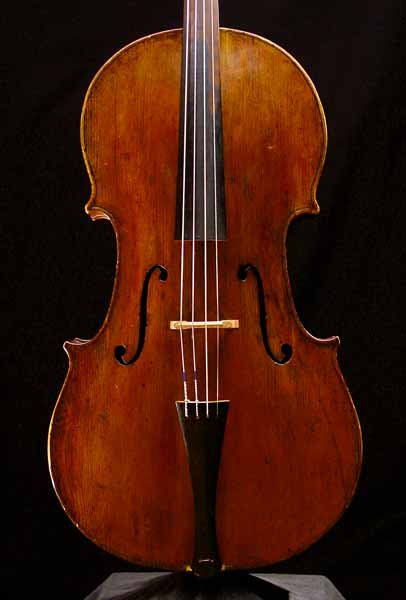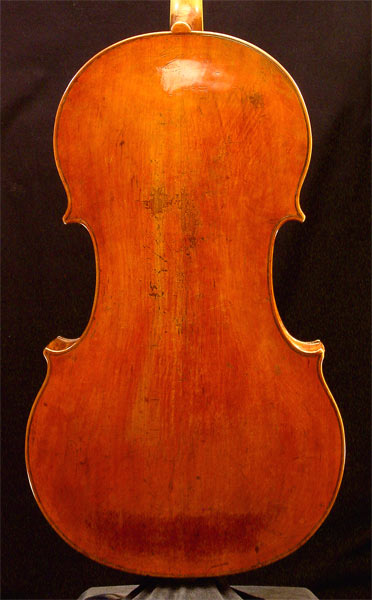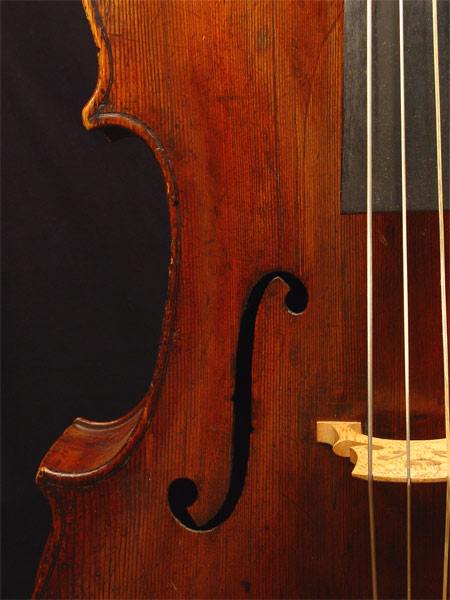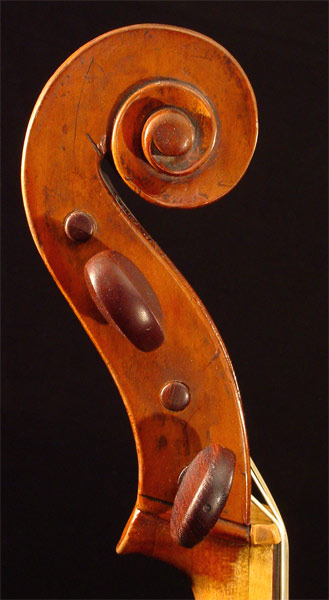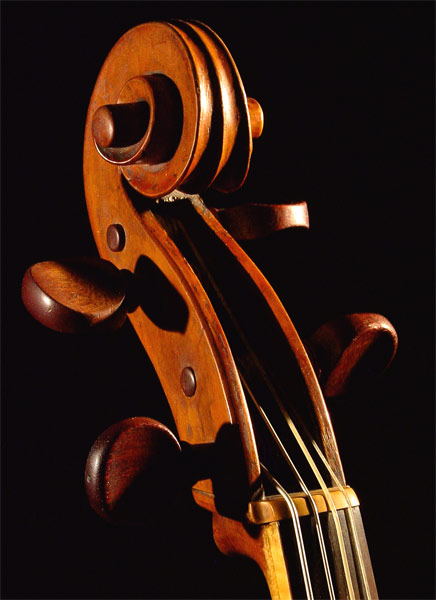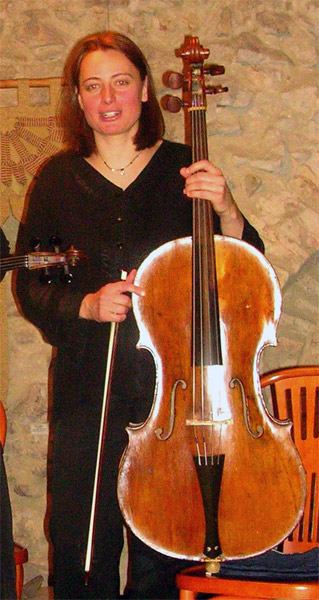Label: Ramon Fernan / dez Oviedo 1640
Although judging from the sound this instrument is one of the finest in the collection, the experts are in disagreement as to its origin. Eric Blot (Cremona) claims that the wood used for the back and ribs is a particular species of maple from the Appennine Mountains in central Italy called oppio, thus corroborating the attribution to North Italy ca. 1720 by Charles Beare (London). Nevertheless other experts have claimed to identify the wood of the back as one of the following: oppio, carpino, willow, cherry, pear or apple. All of these woods are known to have been used for the construction of violoncellos and basses.
The spurious label, identifying this instrument as a Spanish production (city of Oviedo) from the middle of the 17th Century, can be dismissed on the basis of the results of dendrochronology.
